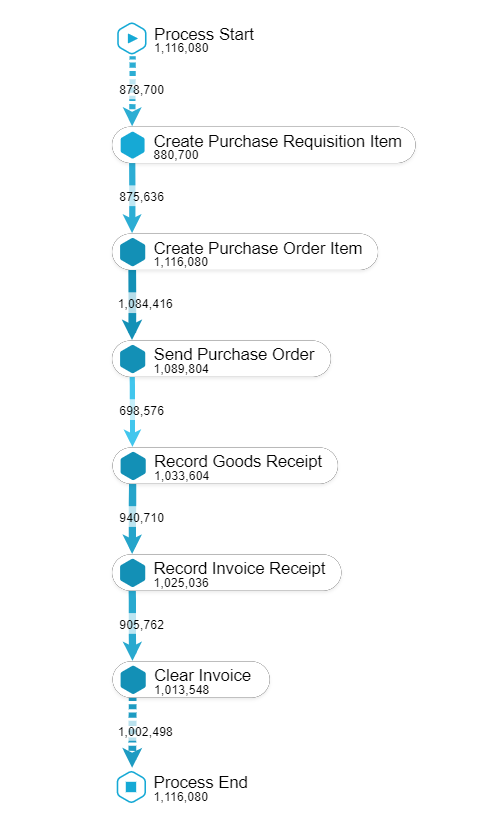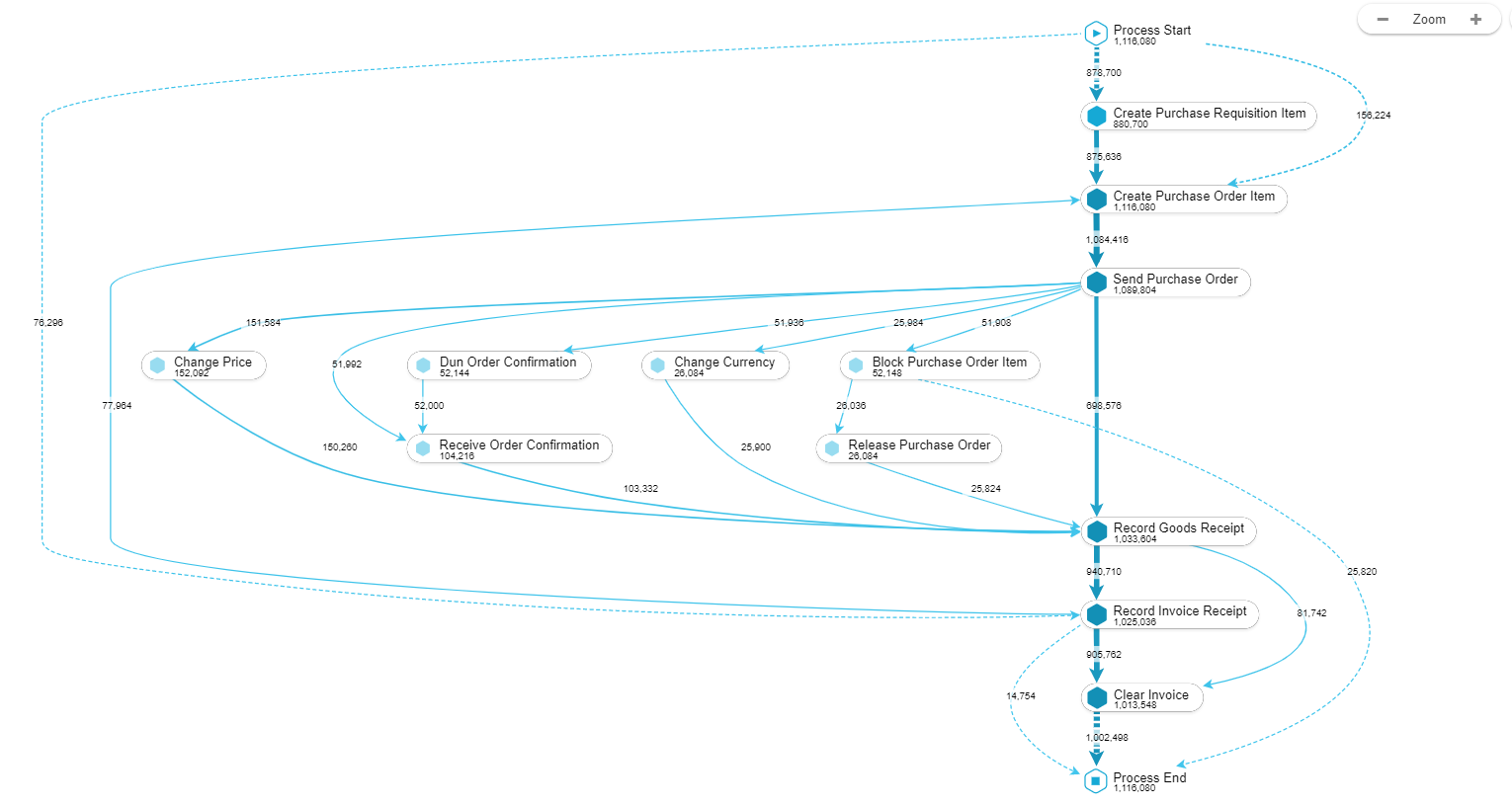From Data to Sustainability: A Greener Future with Process Mining

To put it simply, procure to pay process is what happens when you or someone within your organization buys something.
Procure to pay consists of requisitioning, purchasing, receiving, paying for, and accounting for goods and services. It gets its name from the ordered sequence of procurement and financial processes, starting with the first steps of procuring a goods or service to the final steps involved in paying for it.

To explain with an example, you can imagine an office manager who needs more toner for her printer. She sends a request for more toner to her purchasing department and waits for to goods to be delivered. At the same time, your company receives the invoice and the goods, pays for the goods, and finally sends the invoice to accounting.
Not much can go wrong in the purchasing process.
Or can it?
As you can see in the following picture, the standard process path or so-called happy path of a procure to pay process is similar to what has been described in the previous example. So far so good.

The process starts with a purchase requisition. After that, the purchase order is sent, both goods and invoice are received, and the invoice is then cleared.
Unfortunately, many deviations can occur for a number of different reasons.
Next, let us take a look at the same process when some more activities are included.

Not so nice anymore, is it?
Some additional and often unnecessary activities impacted the length of the purchase order journey. You can see that thousands purchase orders have been for example:
What can be improved in procure to pay process?
It is more than obvious that there is a potential to a lot of bottlenecks in your purchase to pay process. Finding them is vital for your overall process transparency and Celonis can help you with just that.
Frequent use cases that deserve a lot of your attention are:
Imagine how much time your company loses when the price of the purchase order is unexpectedly changed couple of days after it has been created. Sure, if you are waiting for a toner delivery, you and your colleagues can sure wait a bit longer, but if your production is missing a vital piece in the assembly process, your company can get into trouble.
And there is so much more. We have only just scratched the surface.
If you are in doubt and would like to optimize your purchase to pay process, do not hesitate to contact us! We are the market leaders in process mining implementations and P2P process belongs to one of the processes that we have mastered with many of our customers over the years.
In the Process Mining implementation, there are always three prerequisites:
When all the above criteria are met, nothing can stop us from the implementation of the end to end procure to pay process.
There are many activities that can be tracked in the procure to pay process. These are naturally project-dependent and certain customers might face different issues than others. Therefore, it is always a good practice to adjust the process to the needs of the individual customer.
Some of the activities that are very common and that are usually implemented in the procure to pay process are:
Jakub Dvořák
Data Science Team Lead
Procure to pay systems are designed to provide companies with control and visibility over the entire life cycle of a transaction, providing full insight into cash-flow and financial commitments.
If you want your company to work as a well-oiled machine, the operations need to be lean and ideally touchless. This can be achieved with Celonis Process Mining technology and well-defined goal-oriented use cases.
At Processand we have a great record of successfully implemented procure to pay processes. Companies such as R+V, Deutsche Bahn, Maquet-Getinge or V-Line belong to our satisfied customers.
Need some extra help with your purchase to pay implementation? And what about your order to cash process? Do not hesitate and get in touch with us today!
Learn More About Process Mining.
Data processing
We use cookies to personalise content and ads, to provide social media features and to analyse our traffic. We also share information about your use of our site with our social media, advertising and analytics partners who may combine it with other information that you’ve provided to them or that they’ve collected from your use of their services. By clicking “Accept All Cookies” you agree that cookies are stored on your device, which assists us to help improve your website experience and help our marketing initiative. For additional information on how the cookies function, select the ”Manage Cookie Settings” or use the link here: Data Policy
Necessary
Necessary cookies help make a website usable by enabling basic functions like page navigation and access to secure areas of the website. The website cannot function properly without these cookies.
We use TYPO3 as a content management system (CMS). Cookies are used to store login information, for example.
We remember your data processing consent settings.
We use PHP to generate website content.
Analytics
Analytics cookies help website owners to understand how visitors interact with websites by collecting and reporting information anonymously.
We use Google Tag Manager to connect Google Analytics to our website.
We use Google Analytics to register a unique ID that is used to generate statistical data on how the visitor uses the website.